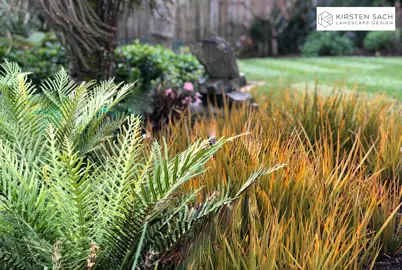
The Plant Company grows, sells, and ships Platanus trees throughout NZ. We pride ourselves on producing high quality plants and seeing the joy from our customers when they receive them. We do hope you enjoy them and support this NZ business that is passionate about Platanus trees.
Platanus acerifolia, commonly known as the London Plane Tree, is a large, deciduous tree grown for its foliage, stature, and showy fruits. The...
Platanus Fitzherbert is grown for its colourful foliage and tidy growth habit. The lush foliage emerges deep green in spring, remains this colour...
Platanus orientalis, commonly known as the Oriental Plane Tree, is a large and deciduous tree grown for its foliage, stature, and showy fruits. The...
Platanus Ace of Clubs is a variety of the commonly known, Oriental Plane Tree, and is a deciduous tree grown for its foliage and lovely stature. The...
Platanus acerifolia Pyramidalis, commonly known as the London Planetree or Sycamore Tree, is a large, deciduous tree grown for its foliage and...
Platanus Alford Flame is a variety of the commonly known, Oriental Plane Tree, and is grown for its colourful foliage and tidy growth habit. The lush...
Platanus 'Autumn Glory' is a large, deciduous ornamental tree renowned for its striking foliage and impressive stature. This cultivar of the Oriental...
Platanus hispanica, commonly known as the London Plane Tree, is a large, deciduous tree grown for its foliage, stature, and showy fruits. The foliage...
Platanus orientalis Digitata is a variety of the commonly known, Oriental Plane Tree, and is grown for its colourful foliage and tidy growth habit...
Platanus x acerifolia Suttneri is a variety of the commonly known, Variegated London Plane Tree. This is a large, deciduous tree grown for its...
Growing colourful trees in your garden delivers a vast range of benefits:
We have the largest variety of Plane Trees and the right one for your space. Our trees have been selected to thrive in NZ’s climate. We grow and stock only the highest quality plants, sourcing them locally, and from NZ’s leading nurseries. Each plant is packed and transported with extreme care, ensuring it arrives to you in the same condition it was in when it left the nursery. If you are wanting to buy Platanus trees, shop with confidence from the best in the industry.
1. What is the common name for Platanus?
Platanus trees are commonly known as planes, plane trees, or *sycamores. The name "plane" comes from the Greek word "platanos," which was used to refer to Platanus orientalis, the Oriental plane. The name "sycamore" is thought to be a corruption of the Latin word "saccharum," which means "sugar," as the sap of Platanus trees was once used to make sugar.
2. What is the growth rate of Platanus?
Platanus trees are fast-growing trees, typically reaching heights of 30-50 meters (98-164 feet) in maturity. They can grow up to 1 meter (3.3 feet) per year in ideal conditions. Their rapid growth rate allows them to quickly establish themselves in their environment and outcompete other trees.
The growth rate of Platanus trees can vary depending on several factors, including:
Despite their fast growth rate, Platanus trees are relatively long-lived trees. Some specimens have been known to live for hundreds of years.
3. What is Platanus in English?
Platanus is the genus name for a small group of trees native to the Northern Hemisphere. They are commonly known as planes, plane trees, or sycamores. Platanus trees are characterized by their large, palmately lobed leaves, their small, monoecious flowers in globose heads, and their distinctive bark that flakes off in patches.
There are six to ten recognized species of Platanus, but the two most common and widely cultivated species are:
Platanus trees have been cultivated for centuries for their beauty and shade. They are also valued for their tolerance of urban conditions, such as air pollution and root compaction. They are a popular choice for planting in parks, streets, and gardens.
4. What is the difference between Platanus occidentalis and Acerifolia?
Platanus occidentalis, commonly known as the American sycamore or western sycamore, and Platanus × acerifolia, also known as the London plane or hybrid plane, are two closely related species of trees that are often confused with each other. They are both large, deciduous trees with distinctive bark that flakes off in patches, but there are a few key differences between them.
Leaf shape:
Fruit clusters:
Bark:
Distribution:
5. What are the disadvantages of London plane tree?
Like any tree species, London plane trees (Platanus × acerifolia) have both advantages and disadvantages. While they are widely admired for their beauty, adaptability, and tolerance of urban conditions, they also have some drawbacks that should be considered before planting them.
Despite these disadvantages, London plane trees remain a popular choice for urban landscaping due to their many positive qualities. Careful planning and maintenance can help mitigate the drawbacks and ensure that London plane trees can thrive in urban environments.
6. How big do Platanus acerifolia get?
Platanus × acerifolia, also known as the London plane tree or hybrid plane, is a large, deciduous tree that can grow to be quite large, reaching heights of up to 100 feet (30 meters) and spreads of up to 80 feet (24 meters). It is a fast-growing tree, typically adding 2-3 feet (0.6-0.9 meters) per year, and can reach maturity in 20-30 years.
Whether you need assistance finding the plant you’re looking for or you simply want to know more about who we are and what we do, we invite you to get in touch with us today. A member of The Plant Company team will get back in touch as soon as possible.


